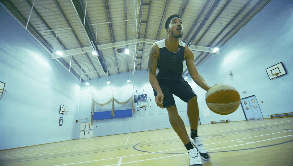Online Film School Free » Film Editing Course » Cutting On The Action
Cutting On Action
Table of Contents
Toggle
Every movie uses many types of video editing techniques that go on un-noticed. Many of these basic video editing techniques like cutting on action, jump cuts, cross-cut, and others didn’t come naturally to the video editors. They had to develop them through the years, so we’ll be able to learn them now and treat them as “basic video editing techniques.”
As a video editor, you need to start paying attention to all the video editing techniques that are being used in movies, and in this online film editing course, we try to cover them all. The biggest challenge of a video editor is to make the editing unnoticeable. Cut in action (also known as matching on action) is one editing technique that will help you to do that. In this lesson, I will teach you everything you need to know about cutting on action from the shooting stage and the editing.
What is Cutting on the action?
Wikipedia’s definition of cut in action is a “video editing technique where the editor cuts from one shot to another view that matches the first shot’s action”. It means you change the angle of the camera in the middle of the action of the lead character. The technique helps the video editor to make the cut more smooth and unnoticeable. Some times this type of cut will even help you to hide continuity problems that were made during shooting, Cutting on the action also helps to draw the audience into the story. For example, you can have a character typing on the computer, and while he types, we cut to his fingers. this type of cut can make the scene more intense like you can see in this cutting on action example
We will see the cut in action a lot on action films as it helps us to feel the action and not just to see it. This is where cut in action is turning into art. In action films the video editor will use this technique to deliver the energy of the scene. We can also use cut on action to make the action look much longer than it is.
Why does cutting on the action work so great? As video editors, our job is to control what the audience feels, and to do that, we need to control what the audience sees. Whan a character moves, our eyes will usually be fixed on the action. That is how we are built. When you cut on action, our focus is on the cut, so we won’t notice any discontinuity if the scene. What you need to remember, when you are planning to do cutting on action is that every action can be disassembled into different parts.
Planning the cutting on action in shooting
The director and the cinematographer’s job is to make sure you shoot the two shots in a way that will be easy to connect them. In our typing example, the actor will have to do the action twice at each angle, and at both times, he’ll have to type the same way. The most important element to pay attention to is to shoot the two shots with a direction distance of at least 30 – degrees from each other. Sometimes you can do cut on the action without changing direction, but it requires the right planning.When to cut?
Some video editors debate about when it’s the right time to cut- at the beginning of an action, the middle, or towards the end. If you cut at the beginning of the action, you should leave the viewer with a long shot until the next cut. If you are cutting towards the end of the action, you need to make sure it’s not too late so that the viewer won’t get bored. There are 2 questions every video editor need to ask before making any type of cut:- What visual information is interesting?
- What visual information is necessary?



